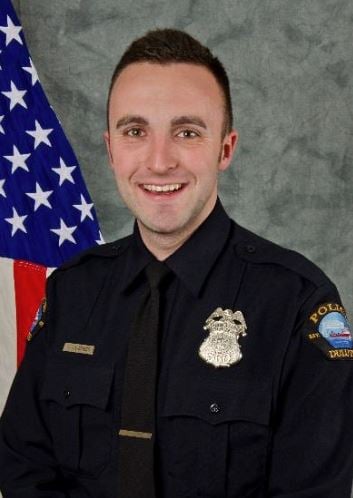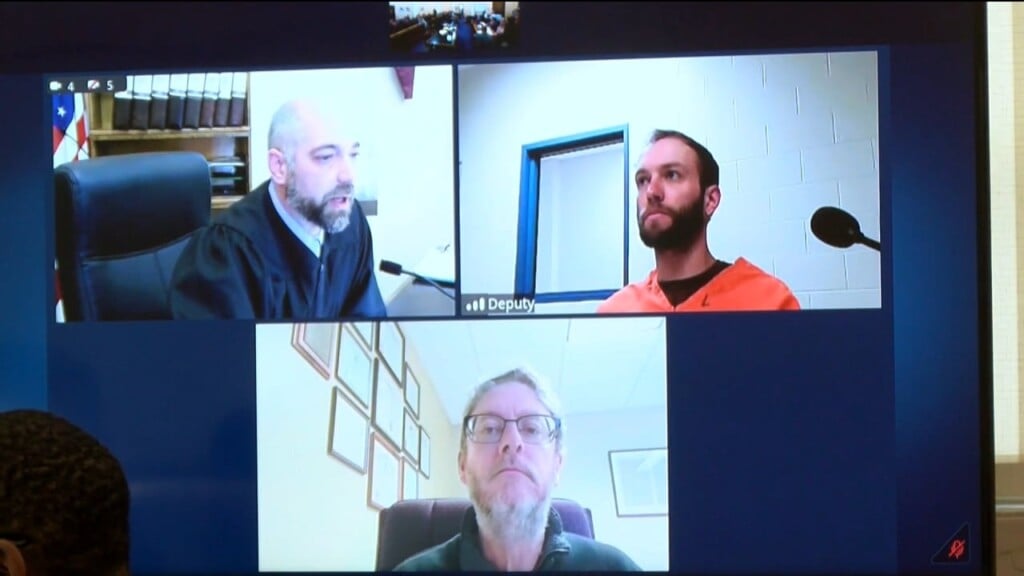Authorities charge man with sparking deadly January wildfire that leveled LA neighborhoods

FILE – An aerial view shows the devastation left by the Palisades Fire in the Pacific Palisades section of Los Angeles, Jan. 27, 2025. (AP Photo/Jae C. Hong, file)
LOS ANGELES (AP) — A 29-year-old man charged with sparking the most destructive blaze in Los Angeles history likely used a lighter to start a fire on New Year’s Day that smoldered underground and reignited almost a week later, killing 12 people in a wealthy hillside neighborhood, authorities said Wednesday.
Federal law enforcement officials charged Jonathan Rinderknecht with lighting the Jan. 1 fire that was extinguished by fire crews only to flare up days later during high winds, acting U.S. Attorney Bill Essayli said during a news conference.
Rinderknecht was arrested in Florida on Tuesday and was due to appear in court Wednesday. He faces charges including malicious destruction by means of a fire, which carries a minimum sentence of five years in federal prison. Aisha Nash, the federal public defender assigned to represent Rinderknecht, has not responded to Associated Press requests for comment.
The Palisades Fire — one of two that broke out on Jan. 7, killing more than 30 people and destroying thousands of homes while burning for days in Los Angeles County — ripped through hillside neighborhoods in Pacific Palisades and Malibu, destroying mansions with spectacular views of the ocean and downtown LA.
Investigators said Wednesday that Rinderknecht had been working as an Uber driver, and after dropping off a passenger in Pacific Palisades, he parked and walked up a trail. He then used his iPhone to take videos at a nearby hilltop area and listened to a rap song with an accompanying music video that included objects being lit on fire, prosecutors said.
He fled the scene after starting the fire, but returned to the same trail to watch it burn, Essayli said.
“He left as soon as he saw the fire trucks were headed to the location. He turned around and went back up there. And he took some video and, and watched them fight the fire,” Essayli said
Rinderknecht also made several 911 calls to report the fire, according to a criminal complaint.
During an interview Jan. 24, Rinderknecht told investigators where the fire began, information not yet public and that he would not have known if he hadn’t witnessed it, the complaint said.
He lied about his location, claiming he was near the bottom of the hiking trail, Essayli said.
The suspect was visibly anxious during that interview, according to the complaint. His efforts to call 911 and his question to ChatGPT about a cigarette lighting a fire indicated he “wanted to preserve evidence of himself trying to assist in the suppression of the fire and he wanted to create evidence regarding a more innocent explanation for the cause of the fire,” the complaint said.
Investigators determined the Jan. 1 fire was intentionally lit, likely by a lighter taken to vegetation or paper, according to the criminal complaint. They excluded other possibilities, including fireworks, lightning and power lines. Authorities also looked into whether a cigarette may have caused the fire, but concluded that was not the cause, the complaint says.
Investigators found a “barbecue-style” lighter inside the glove compartment of Rinderknecht’s car on Jan. 24. It appeared to be the same lighter as one that was in his apartment on Dec. 31, based on a photo on his phone. He admitted to bringing a lighter with him when he walked up the hill.
Investigators still haven’t determined the cause of a second blaze called the Eaton Fire, which broke out the same day in the community of Altadena and killed 19 people.
Both fires reduced block after block of entire neighborhoods to gray and black debris, destroying homes, schools, businesses and churches. While rebuilding is underway in some neighborhoods, it will take years. Many homeowners will not be able to afford it, even those with insurance.
An outside review released in September found that a lack of resources and outdated policies for sending emergency alerts led to delayed evacuation warnings.
The report commissioned by Los Angeles County supervisors said a series of weaknesses, including “outdated policies, inconsistent practices and communications vulnerabilities,” hampered the county’s response.







